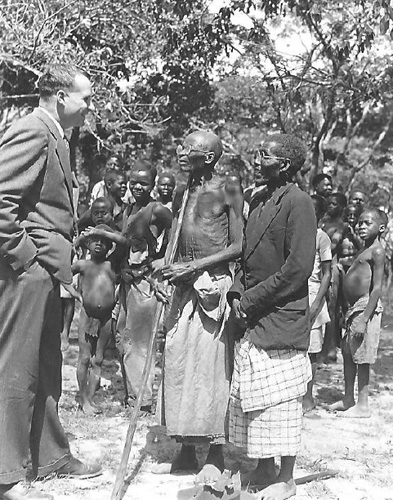
This Article From Issue
November-December 2010
Volume 98, Number 6
Page 444
DOI: 10.1511/2010.87.444
To the Editors:
Philip Rea’s article “Ivermectin and River Blindness” (July–August) reminded me of my parents, Alice and Walter Strangway, and their efforts long ago to help people with that illness. They were medical missionaries and practiced tropical medicine in Angola from 1927 to 1967. The hospital that they created and ran for 40 years was located in the very center of the country, in the highlands. They did a great deal of work on many diseases and a lot of research on Onchocerca volvulus, the parasitic worm that causes river blindness. They captured and studied hundreds of the black fly Simulium damnosum, which carries the worm, near a rapid-running river in the area where we vacationed. And they treated hundreds, if not thousands, of cases.

Photograph courtesy of David Strangway.
As a young man, I had the illness—and the itchiness—but was cured in about 1951 with a then-new drug called Hetrazan. I am enclosing a photograph of my father with two traditional healers who had the disease but only to the stage of cataracts. They could still see, thanks to glasses my father was able to give them. (He collected glasses for his patients from friends in Canada.) My parents summarized the early phases of their work in a short article published in 1951 in the Canadian Medical Association Journal.
David Strangway
Vancouver, British Columbia
American Scientist Comments and Discussion
To discuss our articles or comment on them, please share them and tag American Scientist on social media platforms. Here are links to our profiles on Twitter, Facebook, and LinkedIn.
If we re-share your post, we will moderate comments/discussion following our comments policy.